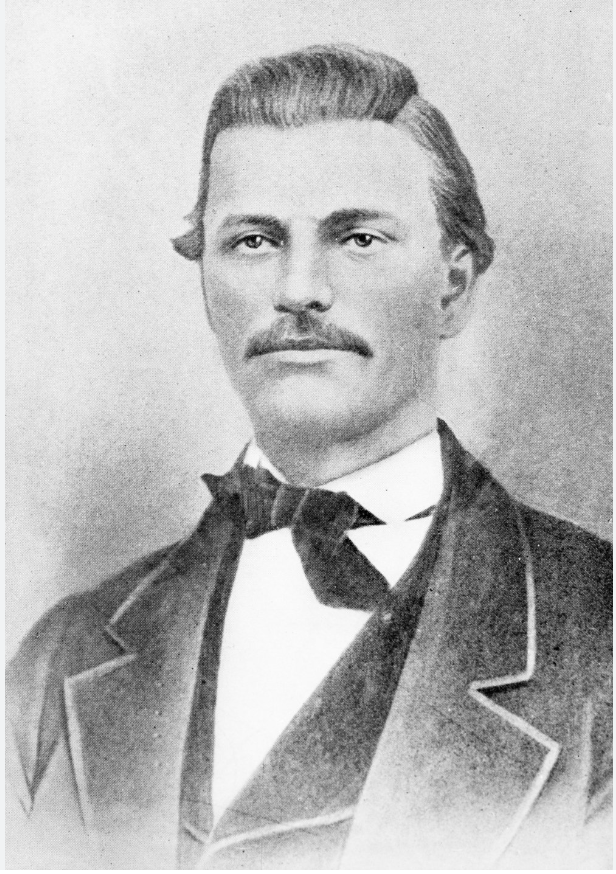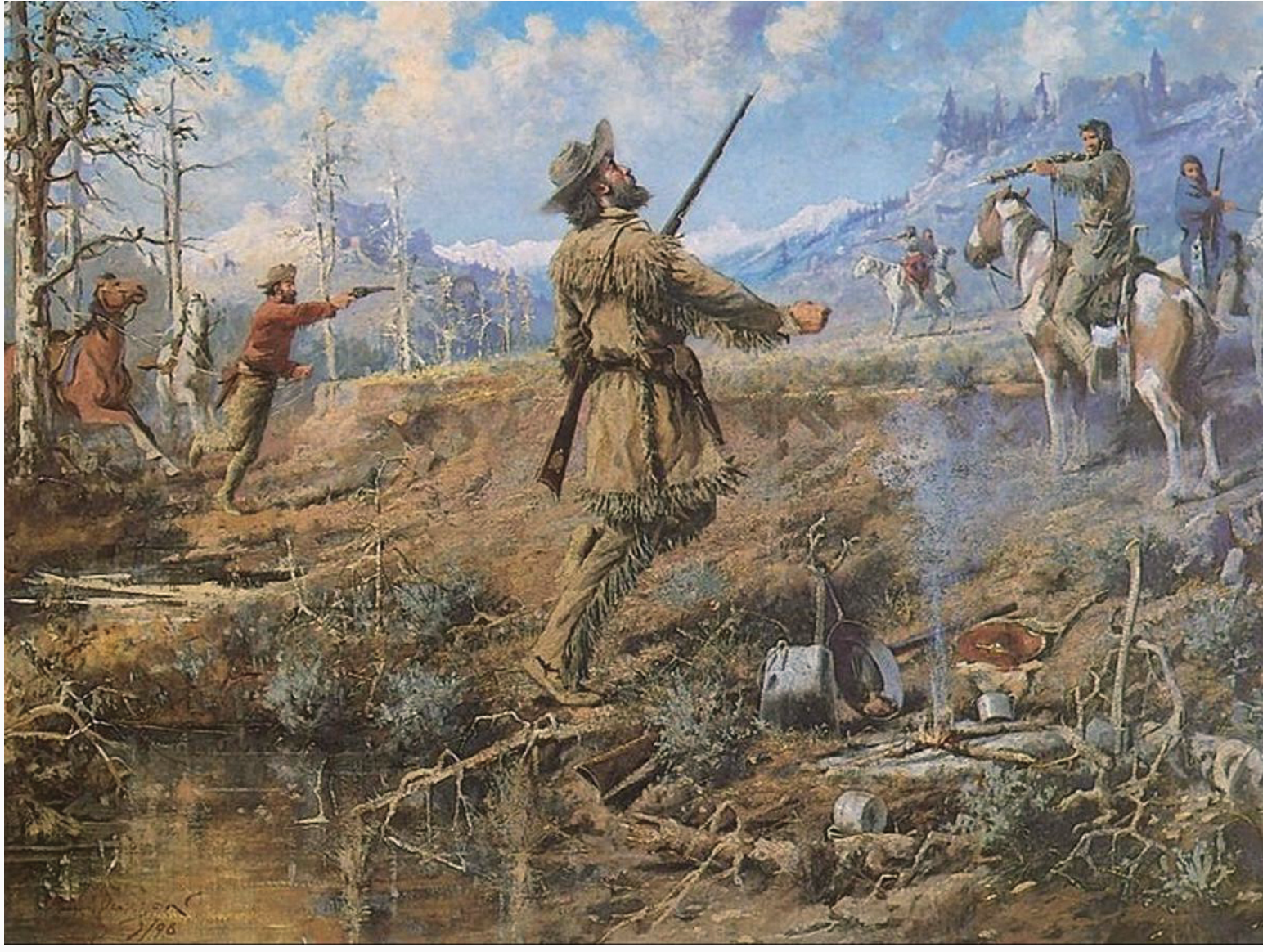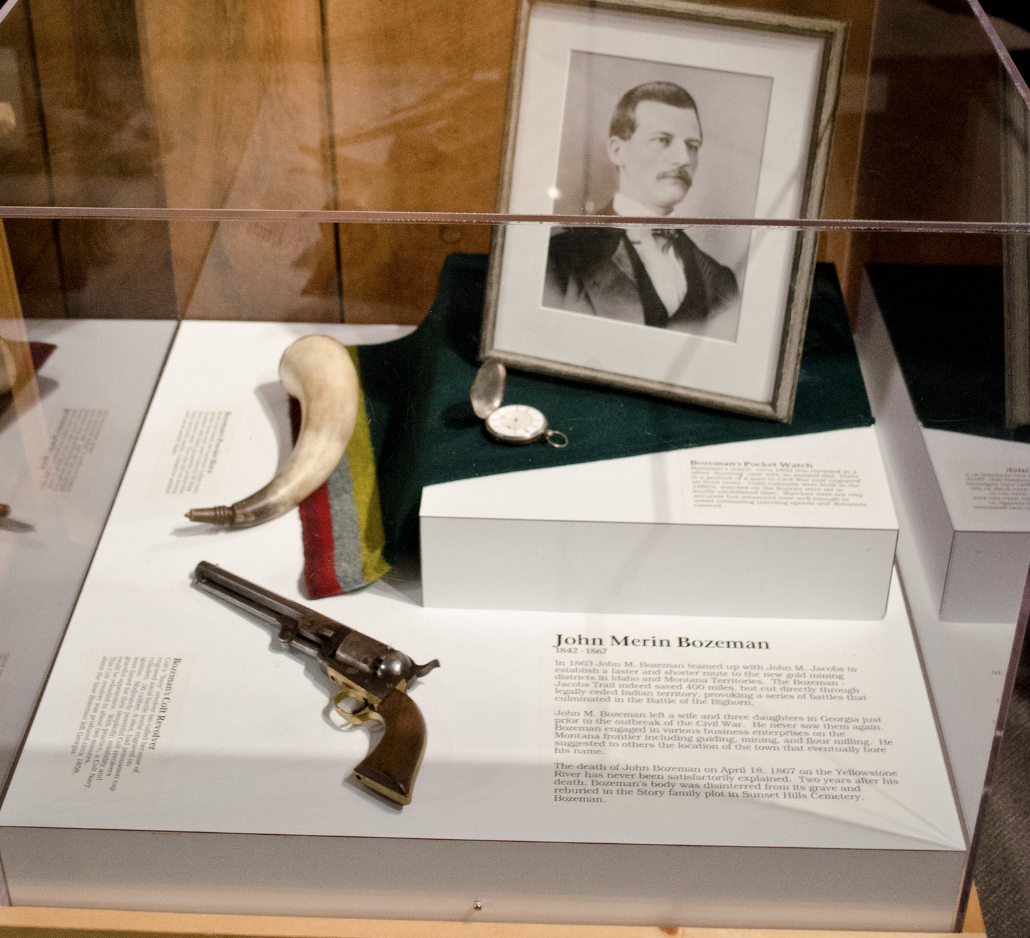The Mystery of John Bozeman’s Death: 154 Years of Speculation
John Bozeman circa mid 1860’s
I remember reading about this story in the Montana's Gallatin Canyon, a Gem in the Treasure State and thinking this tale sounded suspicious…have a look into the mystery in a recap in the recent Distinctly Montana issue.
Few Montana mysteries have sparked more debate—or endured longer—than the death of John Bozeman.
On April 20, 1867, 154 years ago, John Bozeman met his end under circumstances as murky now as they were then. A Georgia native, Bozeman had left behind his wife and children to chase fortune out West, attempting gold mining before ultimately helping to carve a route—later named the Bozeman Trail—from Wyoming to Bannack. His goal? To reach Montana’s gold fields faster than the typical Oregon Trail route allowed.
But Bozeman’s shortcut came at a steep cost. The trail cut through lands set aside for Indigenous tribes under the Fort Laramie Treaty of 1851, igniting violent conflicts. Though the treaty gave the U.S. the right to establish roads and military posts, the area had since been overtaken by Lakota, Cheyenne, and Arapaho tribes from the Crow. By 1860, the southeastern portion of Crow land had effectively changed hands following years of battle. Tensions were high by the time Bozeman officially founded the town bearing his name in 1864.
The “Official” Story
Fast forward to 1867, and John Bozeman is traveling with businessman Thomas Cover, en route to Fort C.F. Smith to help secure a flour contract for Cover’s mill. The two had stayed the night before at a ranch owned by Nelson Story Sr., one of Bozeman’s prominent contemporaries.
According to Cover, the men stopped near the Yellowstone River for lunch when they were approached by five Native American men. Bozeman reportedly believed they were friendly Crow and advised Cover to stay calm. But as the group came closer, Bozeman realized they might be Blackfeet—at the time, an enemy tribe.
A confrontation unfolded. Bozeman was shot twice in the chest and died instantly. Cover claimed he was also shot—once in the shoulder—while rushing to Bozeman’s aid. The attackers allegedly stole the horses and left Cover to hide in the brush. He returned to the ranch around midnight, injured but alive.
That version of events became the official account. Within months, Fort Ellis was established east of Bozeman, with support from local and federal leaders concerned about safety in the region.
Cracks in the Narrative
But not everyone bought Cover’s version of events—especially Nelson Story Sr.
The next day, Story visited the ranch and sent his top tracker, known simply as Joe, to investigate. Joe found Bozeman’s body undisturbed, along with his gun, pocket watch, and other belongings. There were no signs of Native attackers—no tracks, no stolen goods, nothing but the footprints and horse tracks belonging to Cover and Bozeman.
Even more suspicious: Joe found signs that small stones had been thrown to scare the horses away, possibly to make the scene look like a robbery. Back at the ranch, Story examined Cover’s wound and noted powder burns and an unusual “olive-green” coloration—suggesting the shot was fired at close range, contradicting Cover’s claim that he was shot from behind.
The Rumors Begin
Rumors spread quickly. One man, W.S. McKenzie, claimed that Bozeman had begged him to take his place on the journey that day—offering even his clothes and boots in exchange. McKenzie declined, and Bozeman went on alone.
Unable to retrieve Bozeman’s body immediately due to spring weather, a small group buried him near the river. He was later reinterred at Sunset Hills Cemetery in the Story Family plot, where he rests today.
A Murder Cover-Up?
In the 1950s, new allegations surfaced. Historian Jefferson Jones, in his paper The Murder of John Bozeman, cited a 1946 conversation with T.B. Story, son of Nelson Story Sr. T.B. claimed his father had told him that Thomas Cover killed Bozeman, and even shot himself in the shoulder to cover it up.
Initially skeptical, historian Merrill G. Burlingame later interviewed Lester Piersdorf, a friend of Story Sr. and a Bozeman pioneer who claimed to be a witness to “the holdup of the park stages on October 14, 1897, outside the Baxter Hotel in 1954. When Piersdorf recounted the same version of the story—nearly word for word—Burlingame was stunned at how closely the two accounts aligned.
Yet Another Twist
Then there’s Thomas Kent, a lesser-known figure who confessed to his family that he had killed Bozeman—allegedly hired by Nelson Story Sr. himself. This information, uncovered by the Extreme History Project, adds another layer of complexity to an already tangled web.
While Kent’s confession is unverified and passed down through family lore, it reflects the overarching theme in this mystery: conflicting stories, missing records, and a lack of formal investigation in a frontier town that lacked the infrastructure for a proper inquiry.
The Death of John Bozeman by Edgar Paxson, 1898.
The Verdict? Still Unknown.
In the end, we may never know who killed John Bozeman. Was it a tragic encounter with Native warriors? A betrayal by a traveling companion? Or part of a deeper political or economic conspiracy? With no official coroner’s report, no trial, and no surviving first-hand witnesses, the truth remains elusive.
John Bozeman’s personal belongings
You can see —including the pocket watch found on his body—on display at the Museum of the Rockies in Bozeman, Montana.
Have your own theory about what really happened to John Bozeman? Drop a comment or share this post with your thoughts. History may never give us a clear answer, but the mystery remains one of Bozeman’s most fascinating—and haunting—stories.



